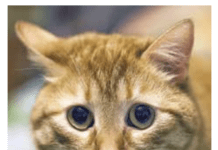Our cats may not talk to us in words. Nevertheless, they have quite a vocabulary of physical, vocal, and olfactory signals. But because cats dont speak the same language we do, there can be misunderstandings about just what theyre trying to tell us – and vice versa.
Heads and tails
Animal behaviorist Karen Overall, VMD, recommends, in particular, watching your cats face, ears, and tail. Their numerous facial muscles enable cats to have a wider range of expressions than most animals, notes Overall. An alert cat gazes forward, ears pricked, and nostrils and whiskers twitching, ready to pick up any sights, sounds, or smells that waft her way.
On the other end, A cat who is sure of herself, willing to be seen, and ready to take on the world walks with her tail held high. So will a retreating cat – shes saying, Watch me leave! But hunting or hiding cats hold their tails low to appear less obvious, says Overall, who is board certified by the College of Veterinary Behaviorists. And, unlike a dog, a cats wagging tail often indicates annoyance. When a slow tail flick intensifies to a strong lashing back and forth, look out! Tails are so key, says Overall, I often wonder how stump-tailed cats manage to communicate at all!
Fightin words
Lashing tails aside, aggressive cats send out many other signals. Threat postures are meant to display weapons by baring teeth and claws, to make the cat look huge via puffed-up hair and tail, and to surprise and upset an opponent with the use of startling movements and sounds. However, notes Overall, People looking for lots of hair, teeth, and eyeballs will miss the subtler threat postures. For example, a truly threatened cat pins back her ears. Most cats, she adds, would much rather avoid a fight than get into one.
In fact, the classic Halloween cat, with her arched back and bottlebrush tail, is more scared than scary. This cat wants you to see her and know that she is not a threat. Then, she wants you to go away! translates Overall. People will sooner reach for a stiffened cat with its head lowered than a hissing cat. But cats that dont reveal their weapons are the ones that tend to bite first and ask questions later.
Cat-speak
When greeting a cat, let her sniff your fingers. It is natural for cats to come to pointy objects – they greet one another nose to nose. By greeting them with your pointy fingers, the cat will think, Hey, this human speaks cat, laughs Overall.
But, she says, there is a whole other cat language humans can never speak. Olfactory glands all over your cats face and paws enable her to spread her scent around when head butting the walls or even simply washing her face. Such information is often passed on when cats meet or discover one anothers scent marks – an odoriferous calling card. Does your kitty rub up against your legs or weave in and out of your ankles? This high compliment in cat-speak means your cat is marking you as hers.
Purr-fect peace
A very relaxed cat often wraps her tail around her feet, purrs, and blinks slowly. She may knead your lap with her forepaws – a throwback to the blissful days of kittenhood when she kneaded her mothers belly as she nursed. All of these signals express utter contentment and passive non-involvement.
As for those mysterious purrs, Overall notes that they vary greatly in frequency, range, and intensity. Like many aspects of cat-speak, Overall says, this has not been well studied. There are so many Masters degree theses out there just waiting to be written!
Paying careful attention to your cat may earn you something even more valuable than a degree. Your heightened sensitivity to her many moods and your willingness to try your hand at interspecies communications will win you the love and trust of your favorite feline.



